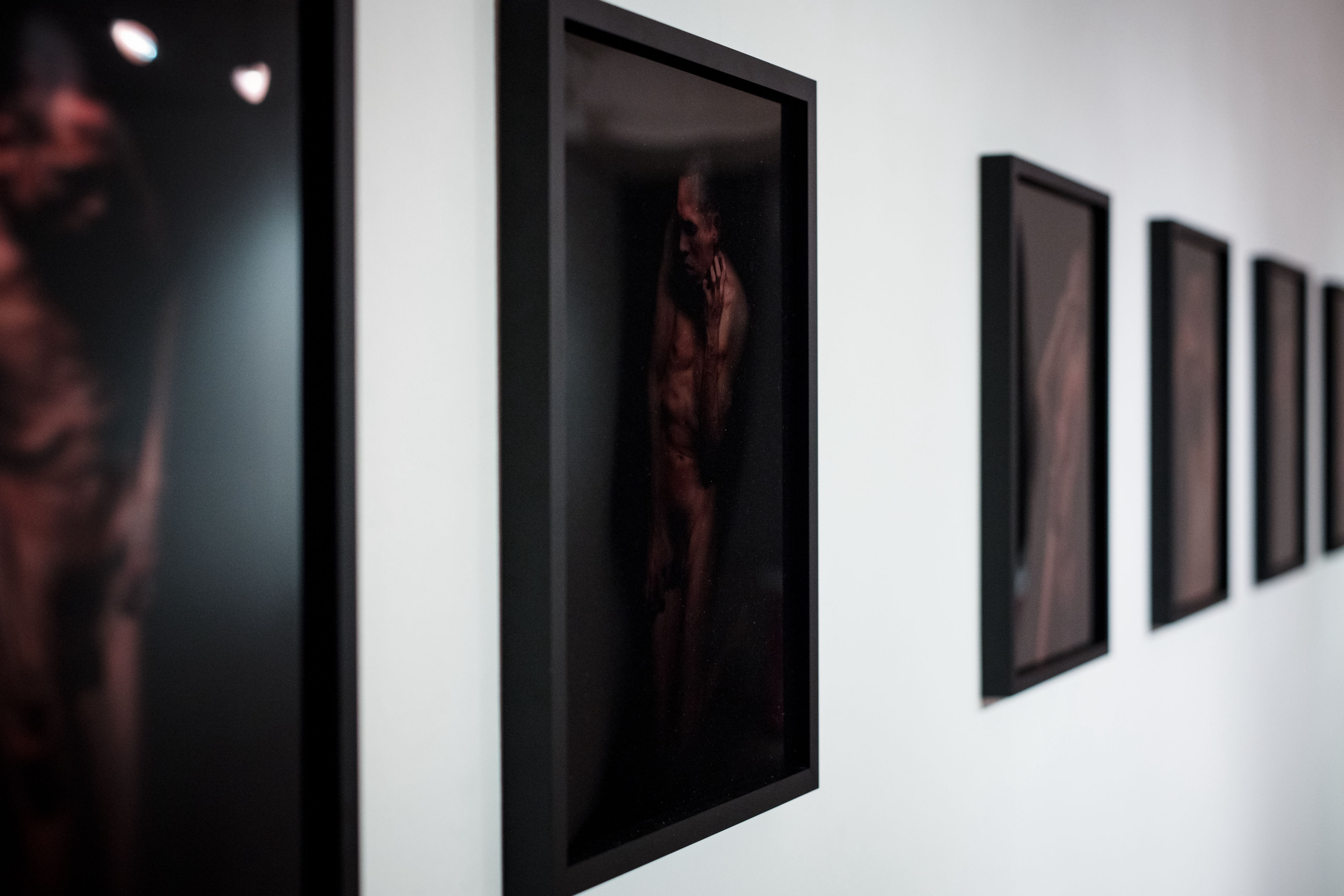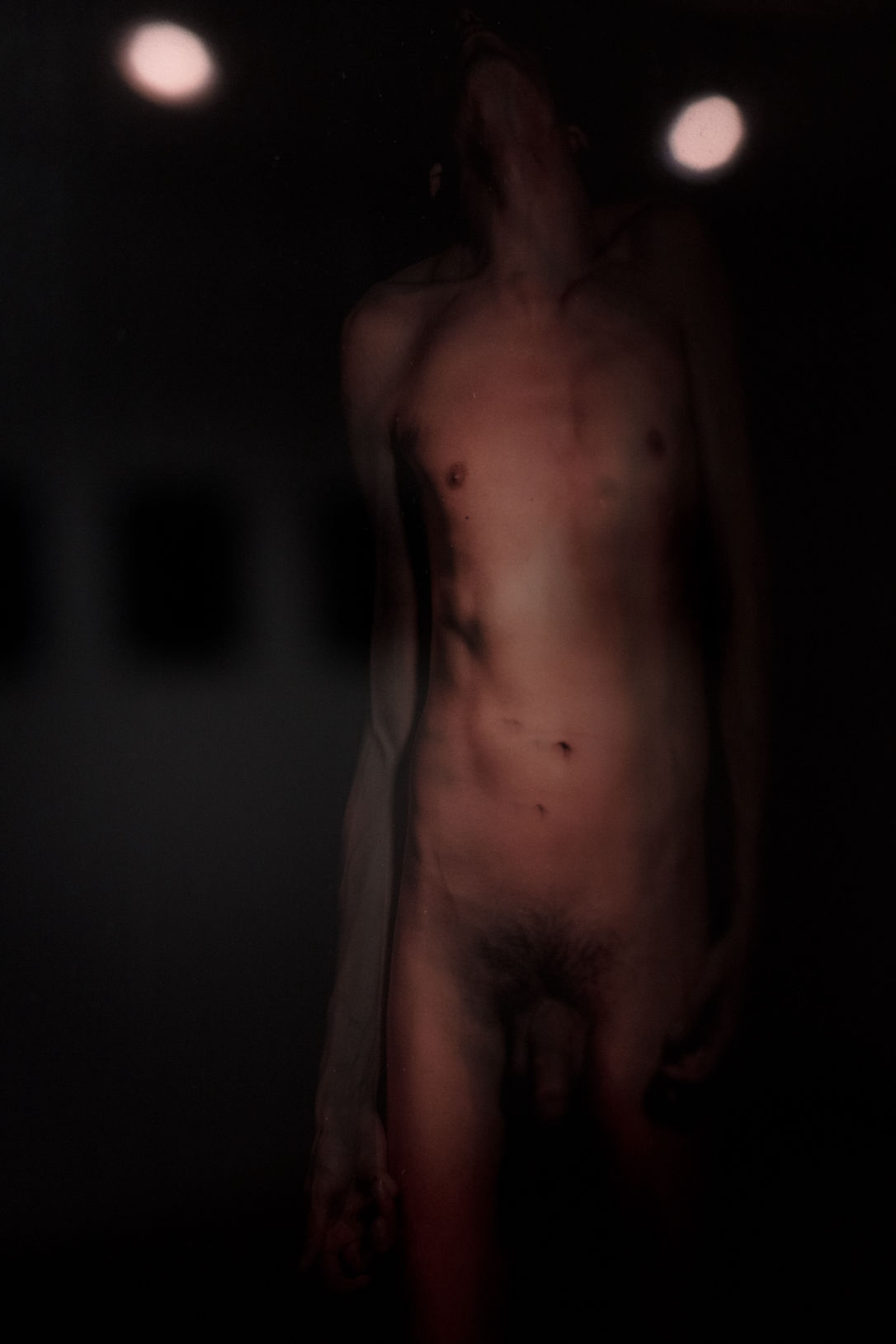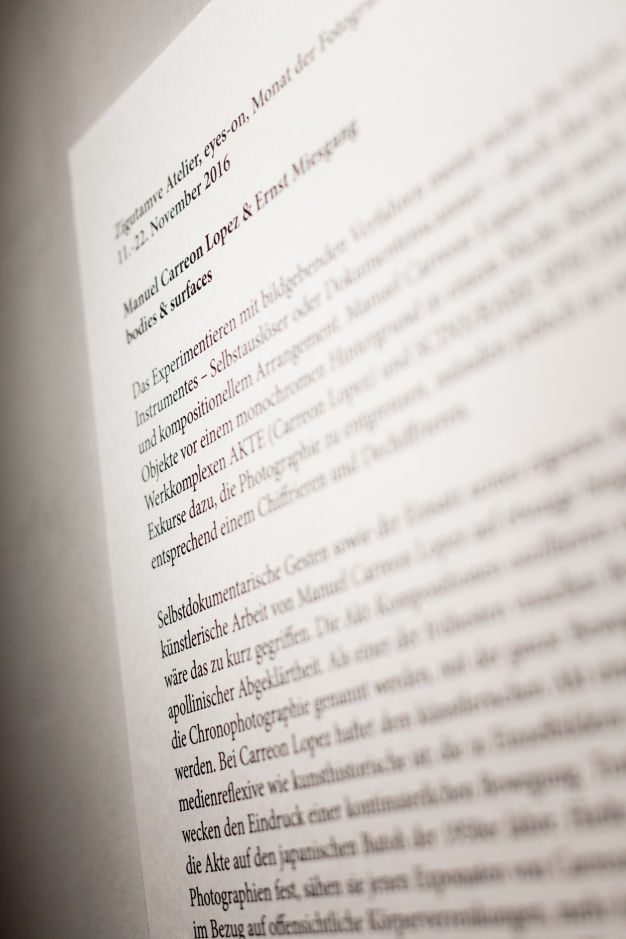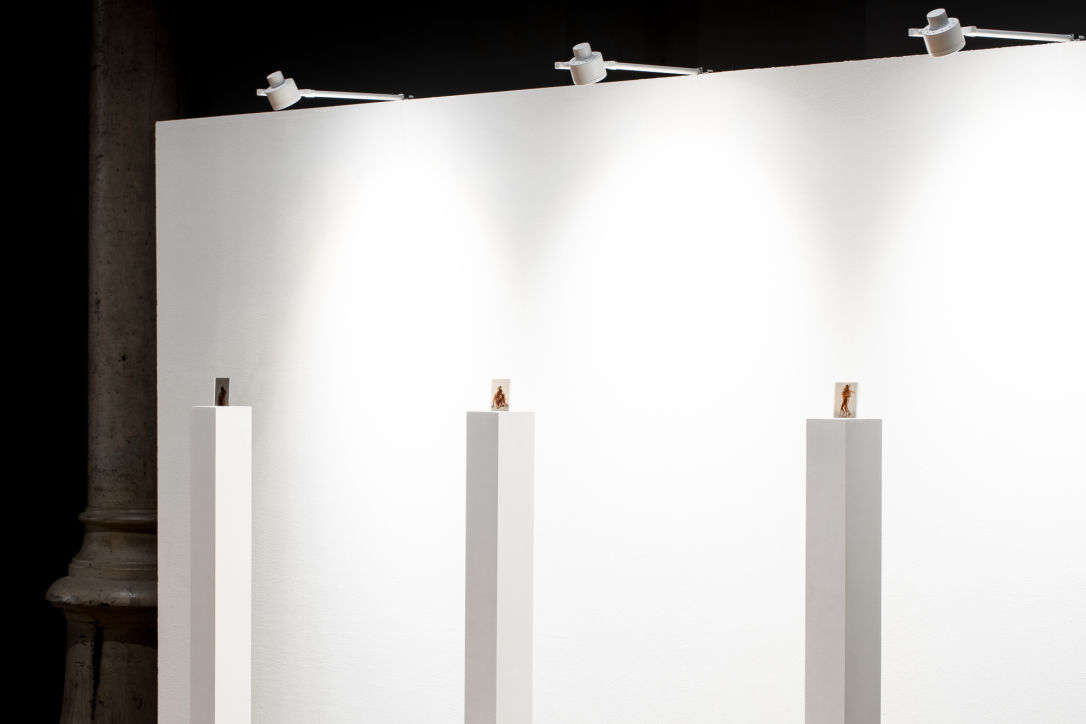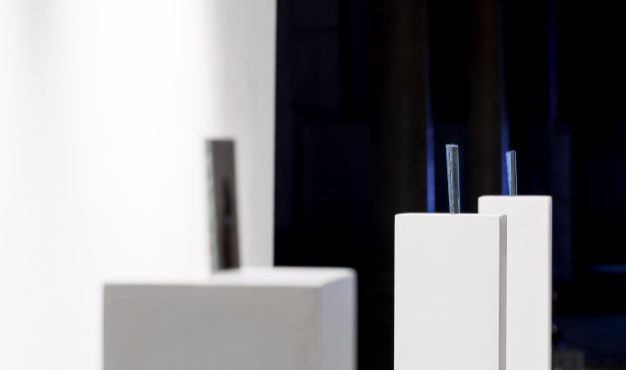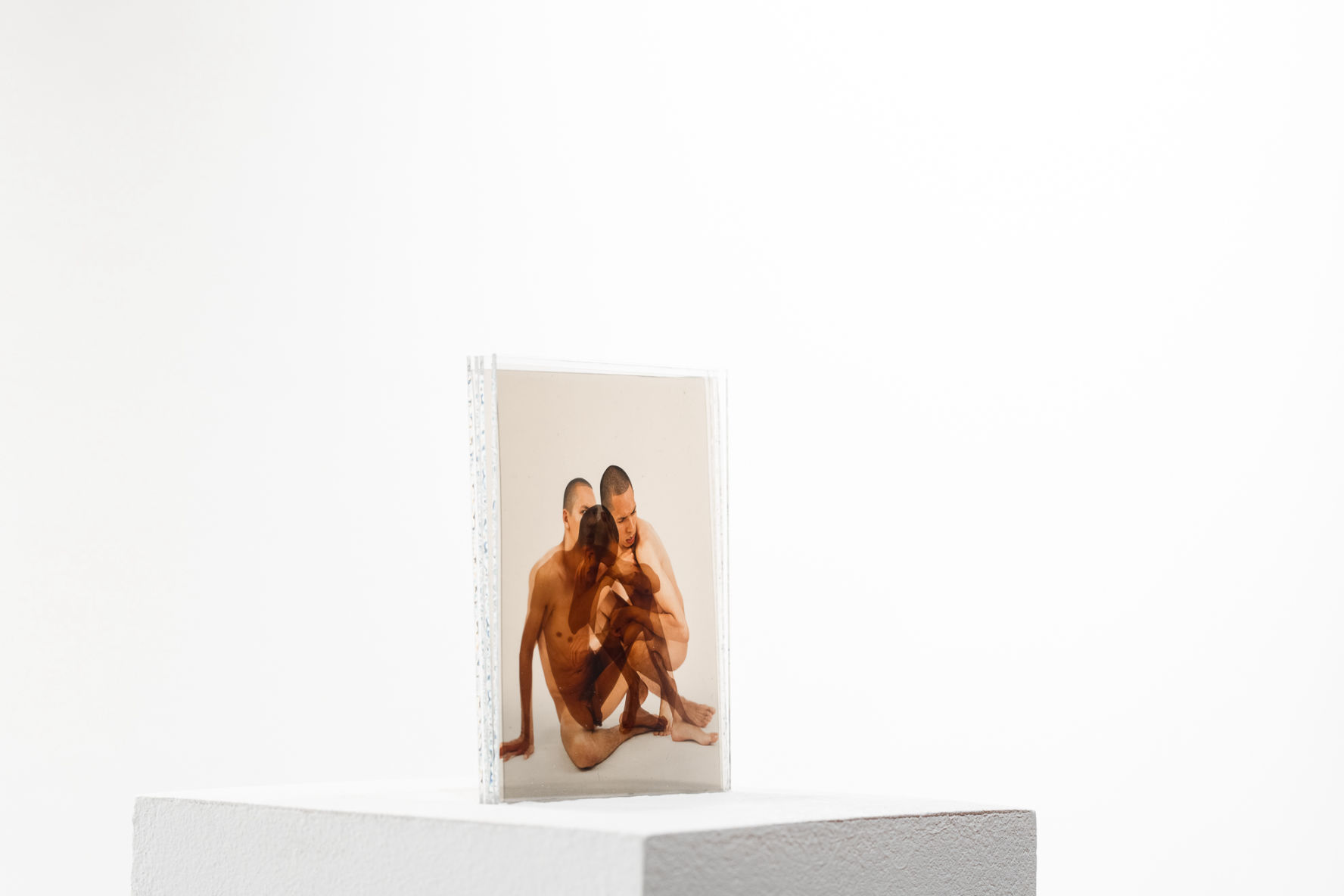POETICS OF REDUCTION
The Nudes of Manuel Carreon Lopez
The Nudes of Manuel Carreon Lopez emerge by means of self-timer. In the performative act, executive body and apparatus form a continuum and create scenarios in a self-effacing dramaturgical setting. The use of his own body may entice to follow a biographic reading. However, picture acts are pivotal in his archival approach, having their genesis in artistic-research within a studio environment.
The compositions oscillate between Dionysian emotion and Apollonian serenity. Placed between these poles, eroticism subtly meanders on the surface of the Nudes of Manuel Carreon Lopez. Even if his gaze does not hit the camera directly, a mere partial availability becomes evident. Concentration and sincerity encompass the photographic aura of the objects, while motives, poses, affective-expressions and their concealment nomadically migrate through the references.
Considering the illusion of movement, the studies of Eadweard Muybridge constitute one of the earliest visual references to the history of photography. To a greater extent however, the Nudes of Manuel Carreon Lopez remind of Muybridge’s coeval, the physiologist Étienne-Jules Marey. With Chronophotography Marey was able to depict entire movement phases on a plate. His technical analyses convey a strong artistic intention from today’s perspective. In the Nudes of Manuel Carreon Lopez an inversion of this relationship takes place: the artistic engagement serves as a medial- and art historical inquiry. The two photographers share an interest in postures of single frames that give the impression of continuous movement.
The Nudes of Manuel Carreon Lopez are informed by infamous positions of the artistic (neo)avant-garde. Self-documentary gestures of medial affect cultures are isolated and transformed into ephemeral versions of perfection. Despite introduced discontinuities, the Nudes refers to Japanese Butoh of the 1950s: if this dance—more method than style—were to be photographically kept hold of, it might resemble the Nudes of Manuel Carreon Lopez: in terms of body contortions and the non-decorative and contemplative (still expressive) reduction. Schiele's nudes and self-portraits from the 1910s, deeply rooted in the canon of Viennese modernism, are a big influence as well: crouching poses and postures, hovering torsos, and the expression of hands indicating inner dynamics. These intensification processes through framing, habitus, and gesture are powerful—so they are in the practice of Manuel Carreon Lopez, which follows and formulates an expanded concept of photography.
(The text at hand is an abridged and modified version of an eponymous longer text written in 2016.)
